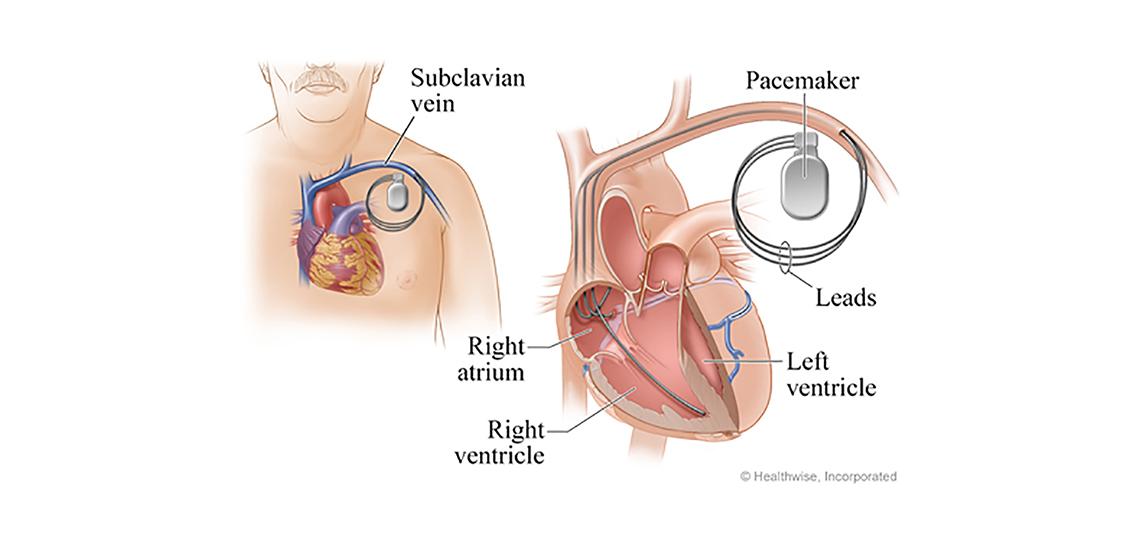
How is a pacemaker for heart failure put in place?
You will get medicine before the procedure. This helps you relax and helps prevent pain.
The doctor makes a cut in the skin just below your collarbone. The cut may be on either side of your chest. The doctor will put the pacemaker leads through the cut.
The leads go into a large blood vessel in the upper chest. Then the doctor will guide the leads through the blood vessel into different chambers of the heart.
The doctor will place the pacemaker under the skin of your chest. He or she will attach the leads to the pacemaker. Then the cut will be closed with stitches.
The procedure usually takes 2 to 3 hours. You may need to spend the night in the hospital.
What happens on the day of your pacemaker placement procedure?
Follow the instructions exactly about when to stop eating and drinking. If you don’t, your procedure may be canceled. If your doctor told you to take your medicines on the day of the procedure, take them with only a sip of water.
Take a bath or shower before you come in for your procedure. Do not apply lotions, perfumes, deodorants, or nail polish.
Take off all jewelry and piercings. And take out contact lenses, if you wear them.
At the hospital or surgery center
Bring a picture ID.
You will be kept comfortable and safe by your anesthesia provider. You may get medicine that relaxes you or puts you in a light sleep. The area being worked on will be numb.
The procedure will take about an hour.
Your recovery
Pacemaker placement is surgery to put a pacemaker in your chest. This surgery may be done if you have bradycardia (a slow heart rate).
A pacemaker is a small, battery-powered device. It sends electrical signals to the heart. These signals work to keep the heartbeat steady. Thin wires, called leads, carry the signals from the pacemaker to the heart. A pacemaker can prevent or reduce dizziness, fainting, and shortness of breath caused by a slow or unsteady heartbeat.
Your chest may be sore where the doctor made the cut (incision) and put in the pacemaker. You also may have a bruise and mild swelling. These symptoms usually get better in 1 to 2 weeks. You may feel a hard ridge along the incision. This usually gets softer in the months after surgery. You may be able to see or feel the outline of the pacemaker under your skin.
You will probably be able to go back to work or your usual routine 1 to 2 weeks after surgery.
Pacemaker batteries usually last 5 to 15 years. Your doctor will talk to you about how often you will need to have your pacemaker checked.
You'll need to take steps to safely use electric devices. Some of these devices can stop your pacemaker from working right for a short time. Check with your doctor about what to avoid and what to keep a short distance away from your pacemaker. For example, you will need to stay away from things with strong magnetic and electrical fields. An example is an MRI machine (unless your pacemaker is safe for an MRI). You can use a cell phone and other wireless devices but keep them at least 6 inches away from your pacemaker. Many household and office electronics do not affect a pacemaker. These include kitchen appliances and computers.
© 2016-2019 Healthwise, Incorporated.








